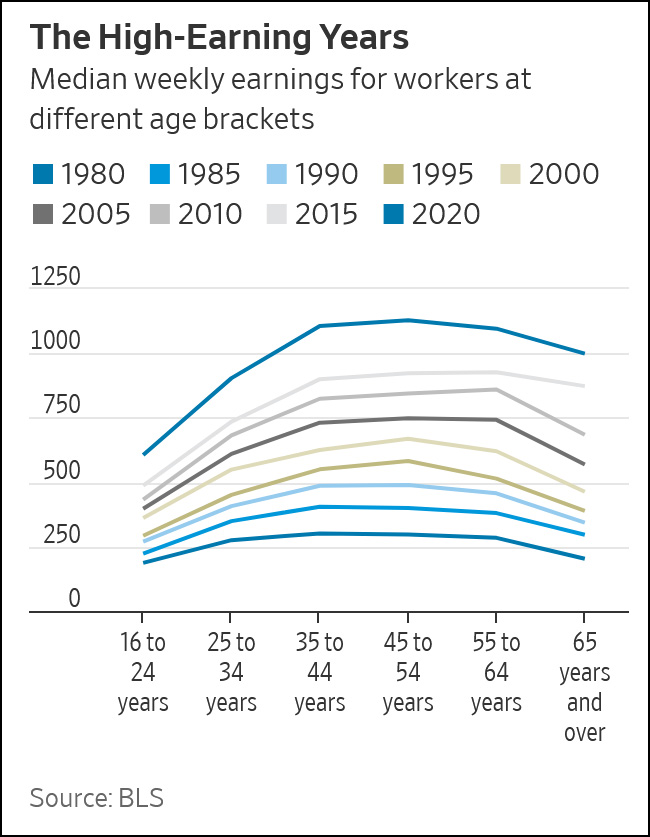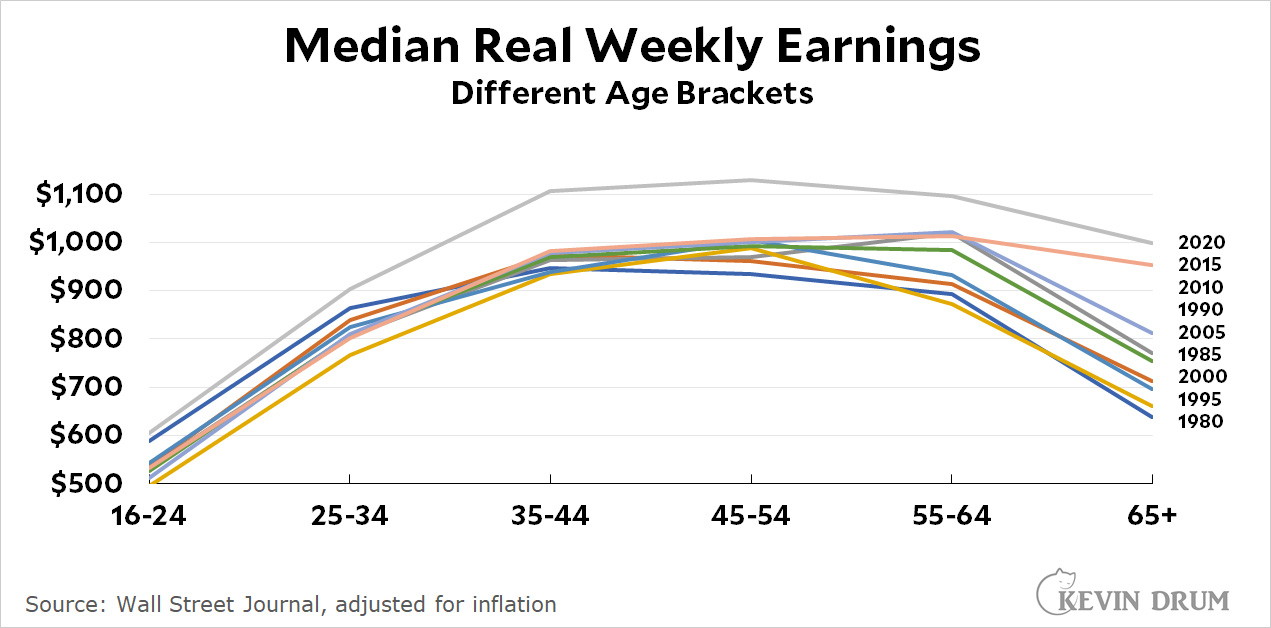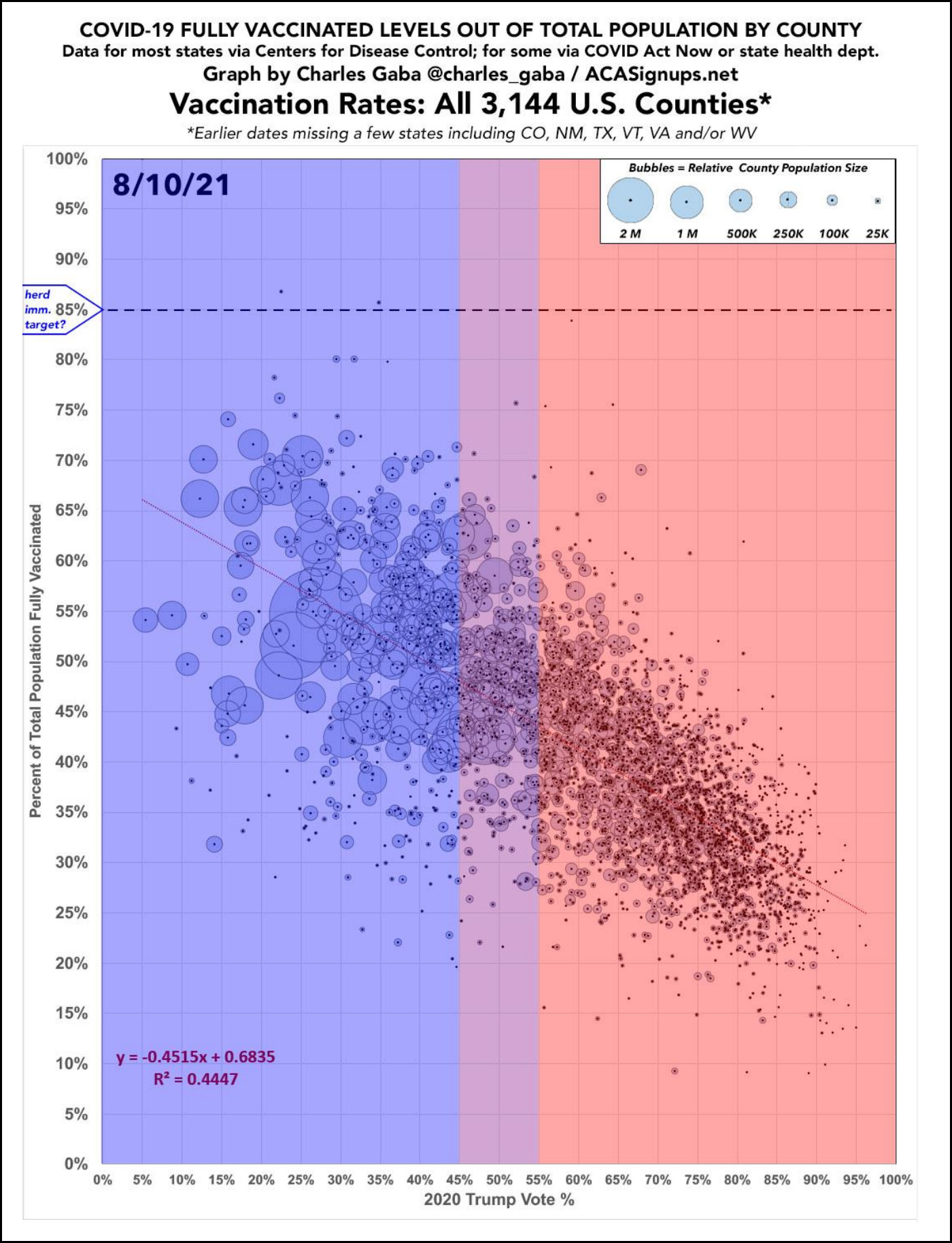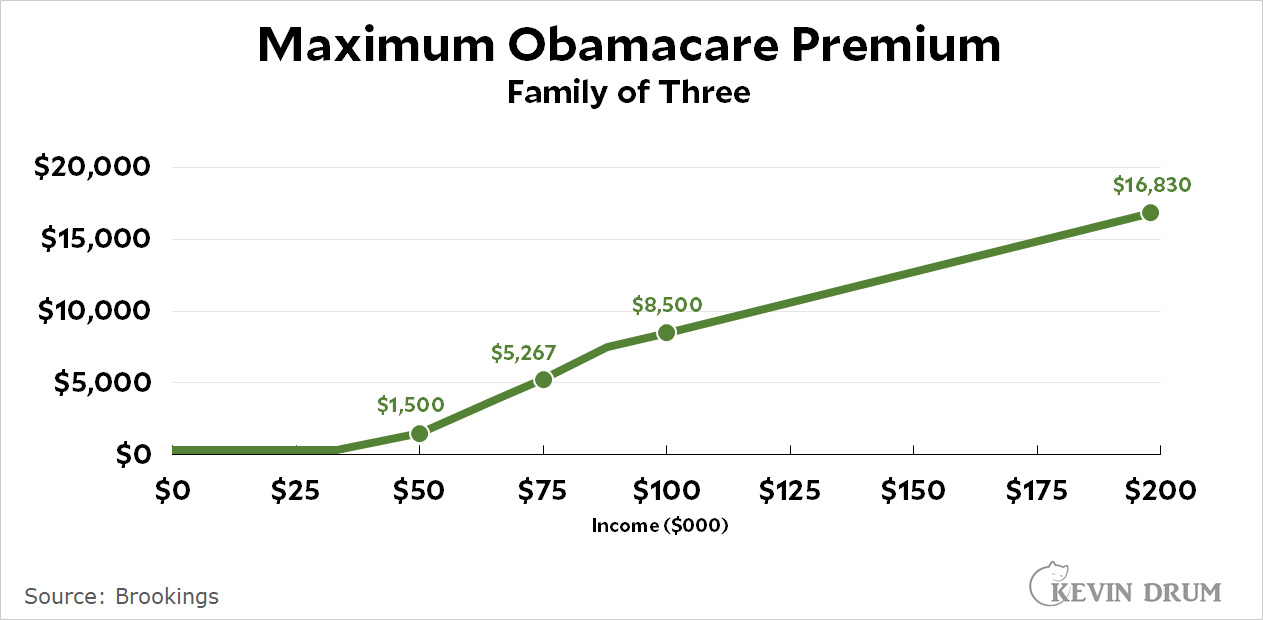How will our torrid economic expansion end up? The following is just one possible scenario based on projections from other people along with some educated guesswork. First, here is the CBO's projection of potential GDP:
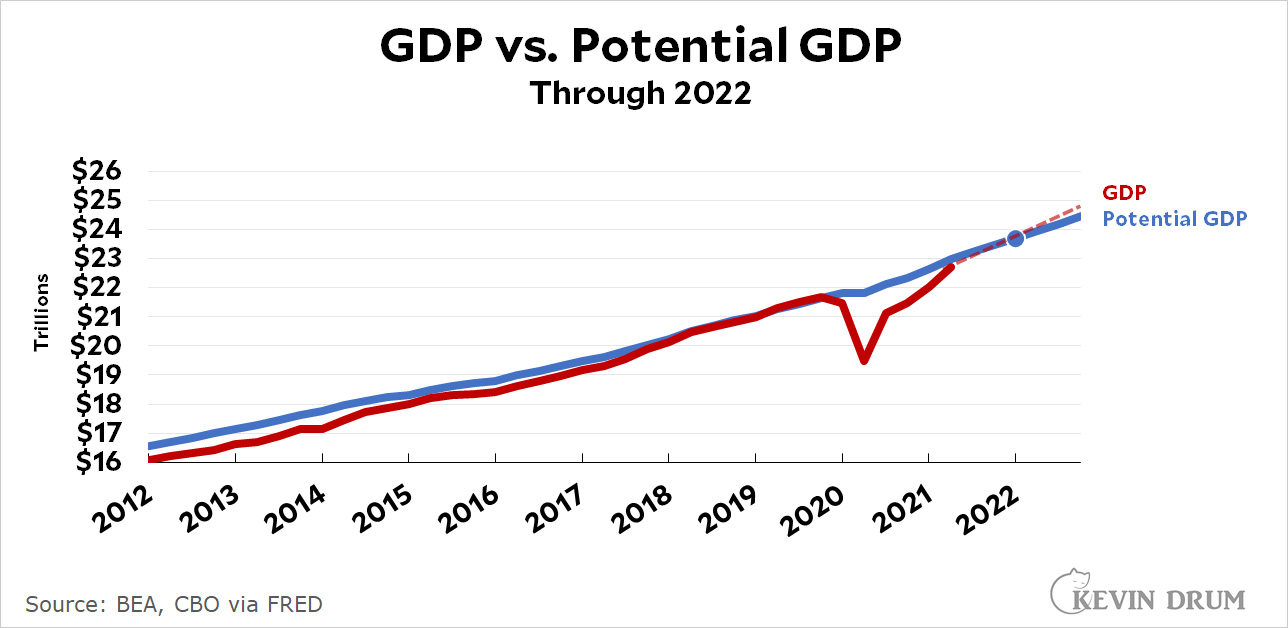
Even if our current growth rate slows down a bit, as it surely will, we'll make up all the loss of GDP we suffered during the pandemic by the first quarter of 2022, with GDP running at about $23.7 trillion. Now here's worker productivity:

Productivity jumped during the pandemic and shows no sign of returning to its pre-pandemic level. Even if productivity growth slows down a bit, it will hit about $153,000 per worker by the first quarter of 2022.
At this rate, by 2022 we will have a labor force of about 155 million workers compared to:
- Current employment of 151.5 million
- Pre-pandemic peak of 158 million
- Trendline level of 163 million.
In other words, it's quite plausible that by the beginning of 2022 the economy will be running at full capacity with a workforce that's only 3.5 million higher than it is today. This compares to an 8-million worker "gap" that you hear about frequently, which is based on employment following the pre-pandemic trendline.
As I said, this is just one scenario, though it's a plausible one. I think it's quite likely that we'll never make up that 8-million worker gap. By the start of 2022 we'll have a roaring economy at an employment level only 3.5 million higher than it is now.
It's been common for jobless recoveries like this to follow recent recessions. Employers learn they can do more with less, or they adopt technology at higher levels and then keep it when the recession ends. In any case, the real employment gap right now is probably around 3-4 million workers. Or so I'm guessing.




